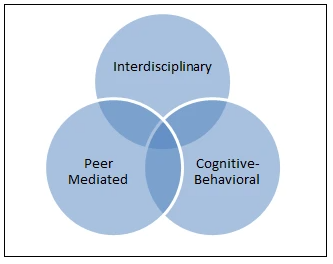Rationale for Using a Peer-Mediated Approach to Change the Culture of Concussion
Most approaches to concussion education consist of educational videos (e.g. Concussion: Don’t Hide It. Report It. Take Time to Recover) and fact sheets (e.g. Concussion: A Fact Sheet for Student Athletes) developed by organizations such as the NCAA and the Centers for Disease Control and Prevention (CDC). Online educational programs are also available (e.g. ConcussionWise SPORT for Athletes). All of these programs employ a “top down” model of education where information is disseminated from an expert authority (e.g. healthcare professionals; organizations) to participants including student-athletes. These approaches have several advantages including portability as well as evidence supporting the effectiveness of using health care professionals to improve knowledge of the signs and symptoms of concussion as well as appropriate post-concussion responses (Bagley et al., 2012).
That said, the effectiveness of concussion education is likely to be enhanced when “top-down” approaches are combined with “bottom-up” approaches such as peer education. Review studies have pointed to the effectiveness of peer-assisted learning and behavioral management in a range of populations including school-aged students (Dart, Collins, Kingbeil, & McKinley, 2014), college students (Dawson, van der Meer, Skalicky, & Cowley, 2014), and adult veterans (Beattie, Battersby, & Pols, 2013).
In addition to research supporting their effectiveness with a wide range of populations, peer oriented programs are likely have the following advantages with respect to concussion education: 1) peer educators are likely to be aware of individual differences in their fellow teammates as well as team dynamics that may enhance or impede concussion reporting and management, 2) peer educators are in a position to act as a liaison with coaches and health care professionals to enhance pro-safety cognitions and behaviors as well as mitigate counterproductive cognitions and behaviors, 3) peer educators can serve as role models with respect to concussion safety, and 4) peer educators are likely to have interactions with fellow teammates outside of practice and games that may reinforce cognitive and behavioral changes with respect to concussion safety.


